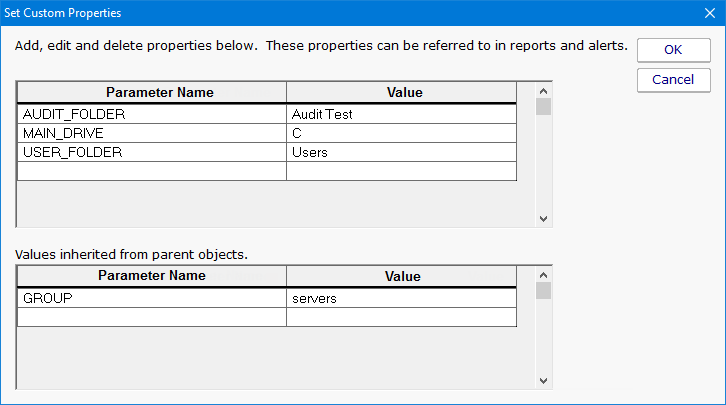- Solutions
-
- File Server: Ransomware Protection
- File Server: File Copy
- File Server: Audit File Access
- File Server: Storage growth reporting
- Licensing/Pricing
- Contact
Custom Properties are name-value pairs that can be set on a Satellite, Group, Computer/Device or Monitor. Custom properties can be used in:
Custom Properties are set in the Console by right-clicking a Group, Computer or Monitor and choosing Custom Properties.

The above example shows Custom Properties on a Computer. AUDIT_FOLDER, MAIN_DRIVE and USER_FOLDER are all defined on the Computer. GROUP is defined at a higher level and is inherited by this Computer. If this Computer also had a value named GROUP defined, the Computer's value would be used (in other words, the closest definition of Property value is used).
Custom Properties can be accessed via the CustomProperty and SetComputerCustomProp in Execute Script monitors and Execute Script actions. They can also be set via the External API via the SET_SERVER_PROP and GET_SERVER_PROP functions.
Custom Properties can be used in message templates via the $CustomProp(property_name)$ replacement variable.
Directory paths in the following monitors can contain the $CustomProp(property_name)$ replacement variable:
An example of the above would be to have a monitor check this folder:
The below list of Custom Properties have specific meaning to the system, which you can take advantage of.
